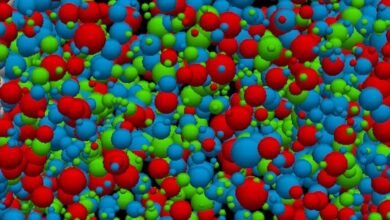What was it like at the beginning of the Big Bang? | by Ethan Siegel | Starts With A Bang! | Nov, 2023

Some 13.8 billion years ago, the Universe became hot, dense, and filled with high-energy quanta all at once. Here’s what it was like.
Looking out at our Universe today, we not only see a huge variety of stars and galaxies both nearby and far away, we also see a curious relationship: the farther away a distant galaxy is, the faster it appears to move away from us. This continues as far as we’ve ever looked, and remains true on average for all galaxies: the farther away they are, the greater their observed redshift (corresponding to recession) is. In cosmic terms, the Universe is expanding, with all the galaxies and clusters of galaxies getting more distant from one another over time. In the past, therefore, the Universe was hotter, denser, and everything in it was closer together.
Imagine what this means if the Universe is, and has always been, expanding: not just for the future, but for our cosmic past as well. If we extrapolate back as far as possible, we’d come to a time:
- before the first galaxies formed,
- before the first stars ignited,
- before neutral atoms,
- or atomic nuclei,
- or even stable matter,
could exist. The earliest moment at which we can describe our Universe at hot, dense, and uniformly full-of-stuff is known as the Big Bang. Here’s the story of how it first began.
Some of you are going to read that last sentence and be confused. You might ask, “isn’t the Big Bang the birth of time and space?” And this is a view that many modern cosmologists can be sympathetic to, as at one point in the history of cosmology, that’s how the Big Bang was originally conceived. Take something that’s expanding and of a certain size and age today, and you can go back to a time where it was arbitrarily small and dense. When you get down to a single point, where all the matter and energy in the Universe comes together at once, that event corresponds to what we know as a singularity: a point from…
Source link




